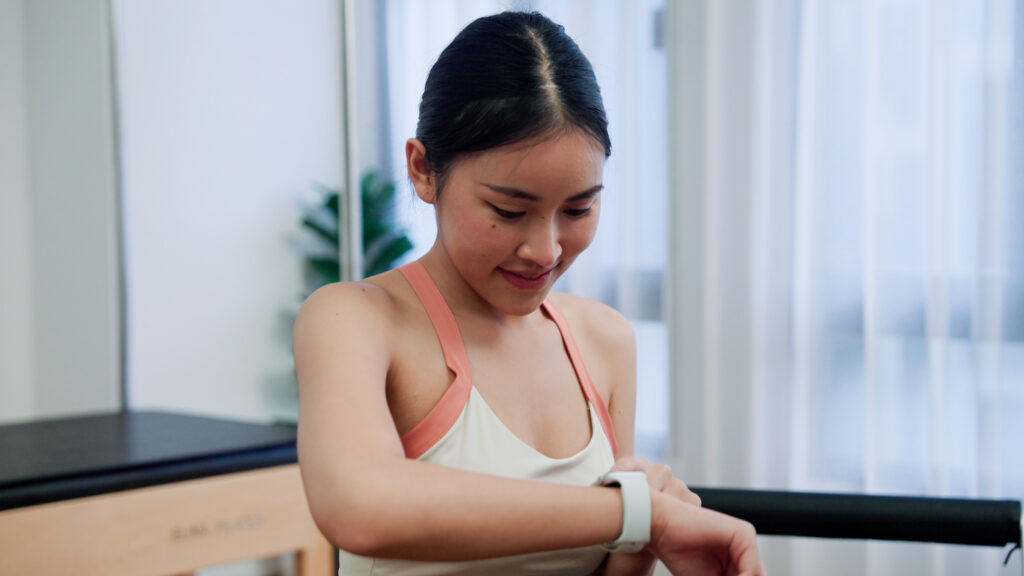How Wearable Tech Can Enhance the Way Dancers Train
“You look tired” is a phrase dancers hear far too often, and usually after they’ve already pushed past the point of exhaustion. But what if they could see fatigue coming, before it takes hold?
Research shows that mismatches between training load and recovery are a major predictor of injury. Thankfully, wearable tech, like smartwatches, fitness trackers, and recovery monitors, is giving dancers and teachers a new way to observe workload. From the impact of landings to recovery patterns, this data helps dancers understand how their bodies respond to training. It’s not about removing intuition from the studio—it’s about enhancing it.
What Can We Actually Track?
Today’s wearables are more accessible than ever. If you’re wearing an Apple Watch or Fitbit, you might already have a high-performance coach on your wrist—you just haven’t been using it that way yet.
Devices like Apple Watch, WHOOP, and Garmin provide insights into:
- Daily workload: e.g., steps, heart rate
- Recovery: heart-rate variability (HRV) or sleep data
- Energy output: measured via “metabolic equivalent of task” (MET) scores and strain scores
METs reflect how much energy your body uses during activity—they give an estimate of output during movement, useful when combined with recovery feedback.
Step count can seem basic, but it’s revealing. A technique class may focus on skill acquisition and controlled repetition. In the lead-up to performance seasons or competitions, rehearsal intensity often lifts, sometimes unintentionally. The pressure to refine details, repeat sequences, or simply “do more” can add considerable volume to a dancer’s workload. Performance anxiety may also be a driving factor, even when their bodies are asking for rest. The two types of days may feel similar in the moment, but the physical demands are often vastly different.
If your wearable shows a noticeable spike in steps or strain, it could be a sign to recover more intentionally the next day. For younger dancers, this is where teacher guidance becomes essential with helping to interpret the data and adjust activity accordingly.
Start Simple: One Metric (or Two) Is Enough
You don’t need to track everything. Start with:
- Daily load (steps or strain)
- Recovery (HRV or sleep)
You can build from there, especially ahead of exams, performances, or competitions.
Heart-rate variability measures variation between heartbeats. Higher scores suggest good recovery; lower ones may indicate stress or fatigue. Morning check-ins or reviewing sleep-based HRV helps dancers and teachers plan daily loads. Since HRV reflects central nervous system readiness, which influences coordination, reaction speed, and timing, it’s especially relevant in dance. The industry demands precise movement, rapid adaptation, and neuromuscular control, all of which rely on a well-recovered nervous system.

For Teachers: Noticing Patterns That Matter
As a choreographer and exercise scientist, I work with pre-professional and professional dancers across Australasia, the U.S., and Europe. One thing I’ve learned? Teachers don’t need a PhD to use this tech meaningfully. Data also relieves pressure: Teachers can manage time more effectively, trust their instincts, and use wearable feedback to support, not replace, their experience.
If a dancer’s recovery scores are low for several days, or their strain score is elevated before class, it may be time for a check-in or slight load adjustment. That doesn’t necessarily mean canceling rehearsal—it might mean reducing the number of full-out runs, substituting some physical tasks with spacing or marking, or incorporating visualization strategies. These might include mentally rehearsing choreography, imagining technical sequences in detail, or using imagery to simulate performance. Such techniques have been shown to enhance neuromuscular coordination and reinforce motor learning in high-performance athletes and performing artists, offering a powerful alternative when physical rehearsal needs to be tapered.
Additionally, consider the role of supplementary training. While strength work, Pilates, or cross-training sessions can be excellent additions to a dancer’s week, they’re still “load.” Well-intentioned as they may be, these sessions add stress to the system. Combining subjective insight with objective data creates a more resilient training model.
For Dancers: Listening to What the Body Is Saying
Elite sports athletes use models like undulating periodization, varying intensity and volume throughout the week. Dancers can benefit from this approach.
That might mean adjusting training intensity on lighter recovery days, or shifting rehearsal focus to quality over volume. I once worked with a student auditioning for the Royal Ballet School. Their schedule looked manageable, but their HRV was consistently low. Late-night study had tipped them into fatigue. After adjusting their daily routine, their focus improved, and their audition was a success.
Tracking progress can ease anxiety, strengthen self-awareness, and foster self-trust. Awareness is often the first game-changer; just knowing when you’re fresh or depleted can help you train longer, smarter, and more sustainably.
Wearable tech doesn’t take the art out of ballet, it supports it. When dancers feel seen and supported—not just artistically, but physically and mentally—their potential isn’t just protected, it’s amplified.
The post How Wearable Tech Can Enhance the Way Dancers Train appeared first on Dance Teacher.